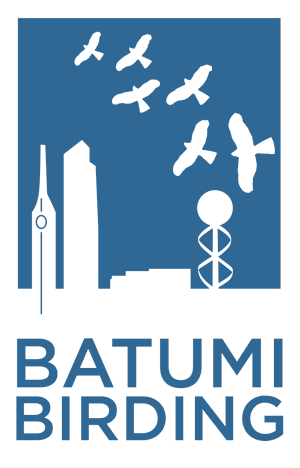The former Soviet republic of Georgia is probably Europe’s fastest growing birdwatching destination. It boasts awesome migration, regional endemics and an enormous diversity of species. Add to this the dramatic scenery, ancient culture and splendid food, and you understand why this country is attracting so many birders.
There is too much to see in Georgia for just one holiday, but here is our top 5:
Batumi migration hotspot. Up to 100,000 raptors pass through on a single day, and you can observe almost any raptor species in Europe. The ‘Batumi bottleneck’ is also a main concentration point for thousands of bee-eaters, rollers, waders, terns, herons and all kinds of passerines. The spring migration lasts from March to May, while in autumn you best come between August and October.
The Greater Caucasus mountains. Here you find many of the region’s endemics, such as the Caucasian black grouse and snowcock, and other species with a predominantly Central Asian distribution, such as the great rosefinch. The best places to visit are Kazbegi and Svaneti. If you love outdoor sports, it’s great to combine the birding with hiking, skiing or mountain biking.
Imperial Eagle land. Georgia’s eastern steppes form a vast wild space, full of wildlife. Here you can roam around for days through valleys and rocky gorges, and meet only the occasional shepherd. The region features a high density of imperial eagle, along with many other threatened raptor species such as black vulture, lanner, saker and lesser kestrel. Mammals are elusive but include brown bear, wolf, golden jackal, lynx and porcupine. The Caucasian leopard was last seen in 2008 here. Winter in these areas is also amazing, when groups of little bustards move in from Russia, and enormous flocks of larks, mixed with Spanish and rock sparrows, buntings and red-fronted serins can be found throughout the plains. The best time to visit is early to late spring.
Javakheti plateau and Vardzia gorge. The atmosphere of the Javakheti plateau, situated at 2000m, is hard to describe. Despite its harsh climate, local people are very friendly and hospitable. In contrast to other parts of Georgia, tourists are rare here. The region’s many lakes and marshes are home to both species of pelican, a local subspecies of crane, a relict population of velvet scoter and many more oddities. The deep gorge of the Mrtkvari rivers cuts through the plateau, creating a dry and warm microclimate that has attracted many southern species, such as the eastern rock nuthatch. It’s a great place to visit in late spring, summer or autumn.
Kolkhic forests of West Georgia. The western foothills of the Lesser Caucasus are covered in dense forest. The climate is very warm and humid, often termed ‘subtropic’, and allows growing tea and citrus fruits. Many of the forests are protected by National Parks, such as Mtirala and Kintrishi, because of the high number of endemic plants and amphibians. Birdlife is also exciting and best explored in spring: virtually all European species of woodpecker occur here, including grey-headed and white-backed, while Krüper’s nuthatch can be found in pine trees along the coast.

